Flan has a signature silky texture created by baking it in a bain marie (or hot water bath) and this creamy custard dessert is topped with a rich caramel sauce. It’s easier to make than you’d imagine and is the perfect dessert for any special occasion!
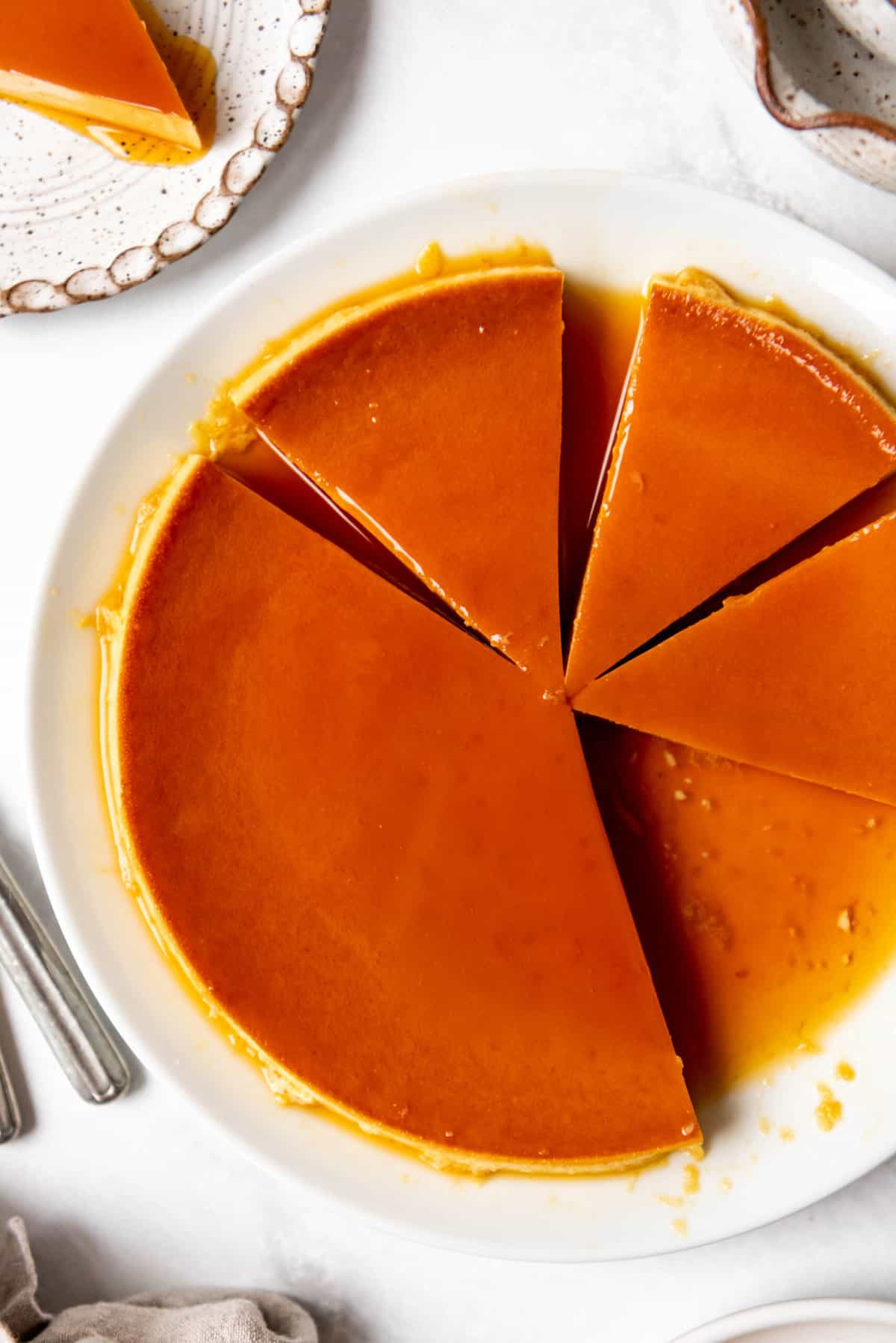
If you love these delicious caramel flavors, you’ll also love my Southern Caramel Cake, my Homemade Cream Caramels, and this Caramel Apple Eclair Cake!
Table of Contents
Flan was an acquired taste for me. When I first moved to New Jersey, I had an amazing multicultural experience with a lot of friends from different nationalities – Mexican, Cuban, Puerto Rican, Dominican – who all LOVED making flan. It’s a popular dessert recipe in each of those and other Latin American countries, and was definitely the most popular homemade dessert for most of the people I was living around.
For a long while though I thought I wasn’t a fan. The flan was too eggy or rubbery – but then I had THIS flan de queso recipe and I fell in love. It’s SO good. And the only real difference is that we are adding a brick of cream cheese to the flan mixture.
If this is your first time making flan, don’t worry. It’s really not that complicated. The most difficult thing is baking it in a water bath, but when done slowly and carefully, it’s perfect every time!
What does flan taste like?
If you aren’t familiar with flan, the closest dessert I can think of that most people might know is creme brulee. They are quite similar and have a sweet, creamy custard flavor and texture with strong vanilla and caramel notes.
This delicious flan recipe is made with whole eggs, evaporated milk, sweetened condensed milk, and cream cheese, with a homemade caramel sauce.
If you love creamy desserts, you’ll also love my Mississippi Mud Pie, this Classic Watergate Salad, and or these individual Cheesecake Jars!
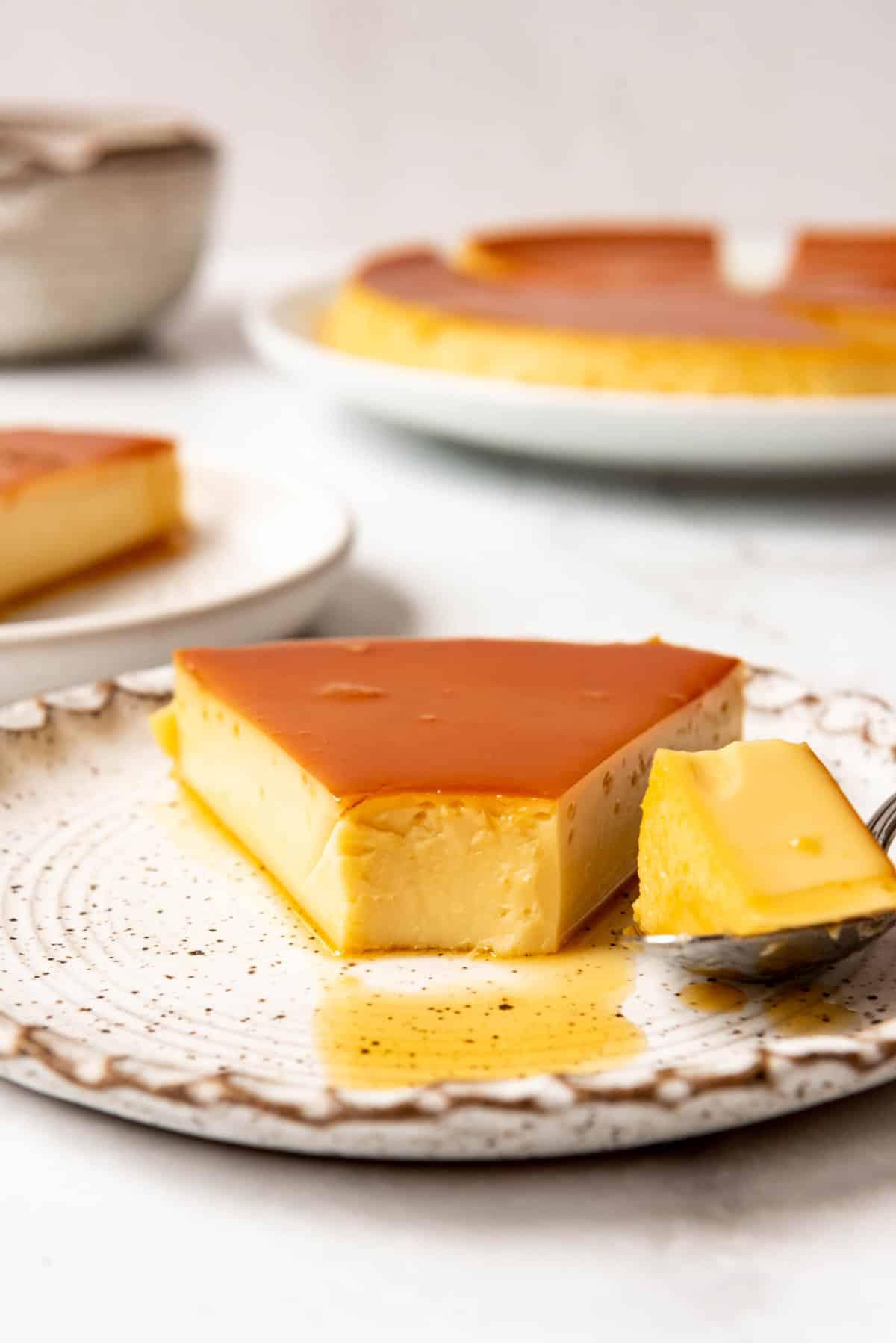
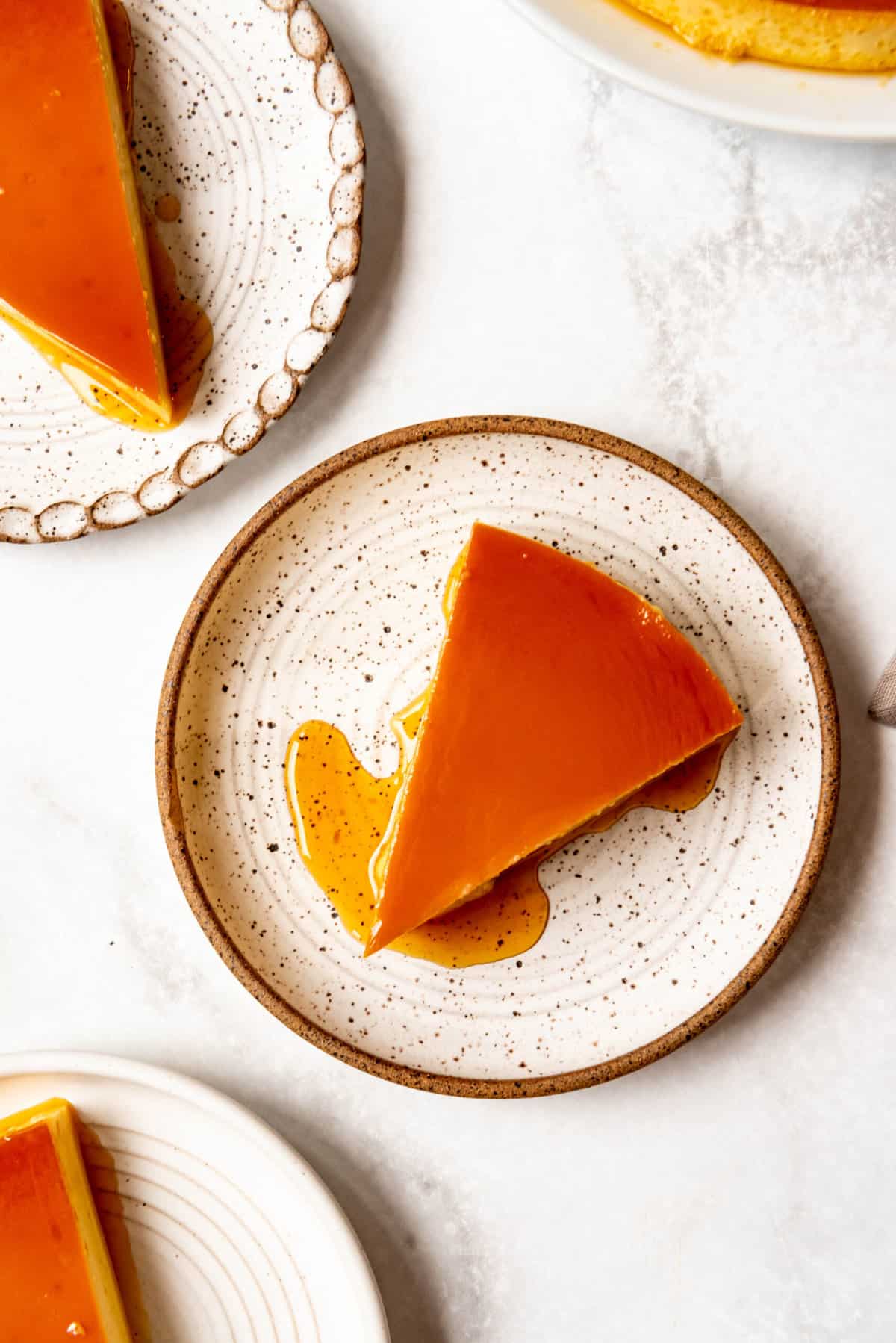
Why We Love This Recipe
- Customize this recipe to make your favorite flavor of flan!
- You only need a handful of simple ingredients for this recipe.
- It’s super easy to make flan, and its chilling time means it’s great for making ahead!
What You’ll Need
Scroll down to the recipe card below this post for ingredient quantities and full instructions.
- Granulated Sugar – We’ll be making our own caramel sauce with white sugar and water.
- Water – You’ll need boiling water to make the ‘baño maria,’ or water bath that is important to achieving that custard texture.
- Eggs – These give the flan is signature texture and richness.
- Evaporated Milk – Adds to the creaminess of the dessert. You can also use coconut milk, which is a popular flan variation in a number of countries, to give it a slight coconut flavor if you like.
- Sweetened Condensed Milk – This will go a long way to give the flan that classic creamy texture and sweetness.
- Cream Cheese – You can leave this ingredient out and make the recipe exactly the same otherwise for a more traditional Spanish flan recipe, but it adds such a fantastic smoothness and richness and mouthfeel that it is what makes this my favorite flan recipe.
- Vanilla Extract – This will give the flan a subtle warm sweetness that melds well with the caramel flavor.
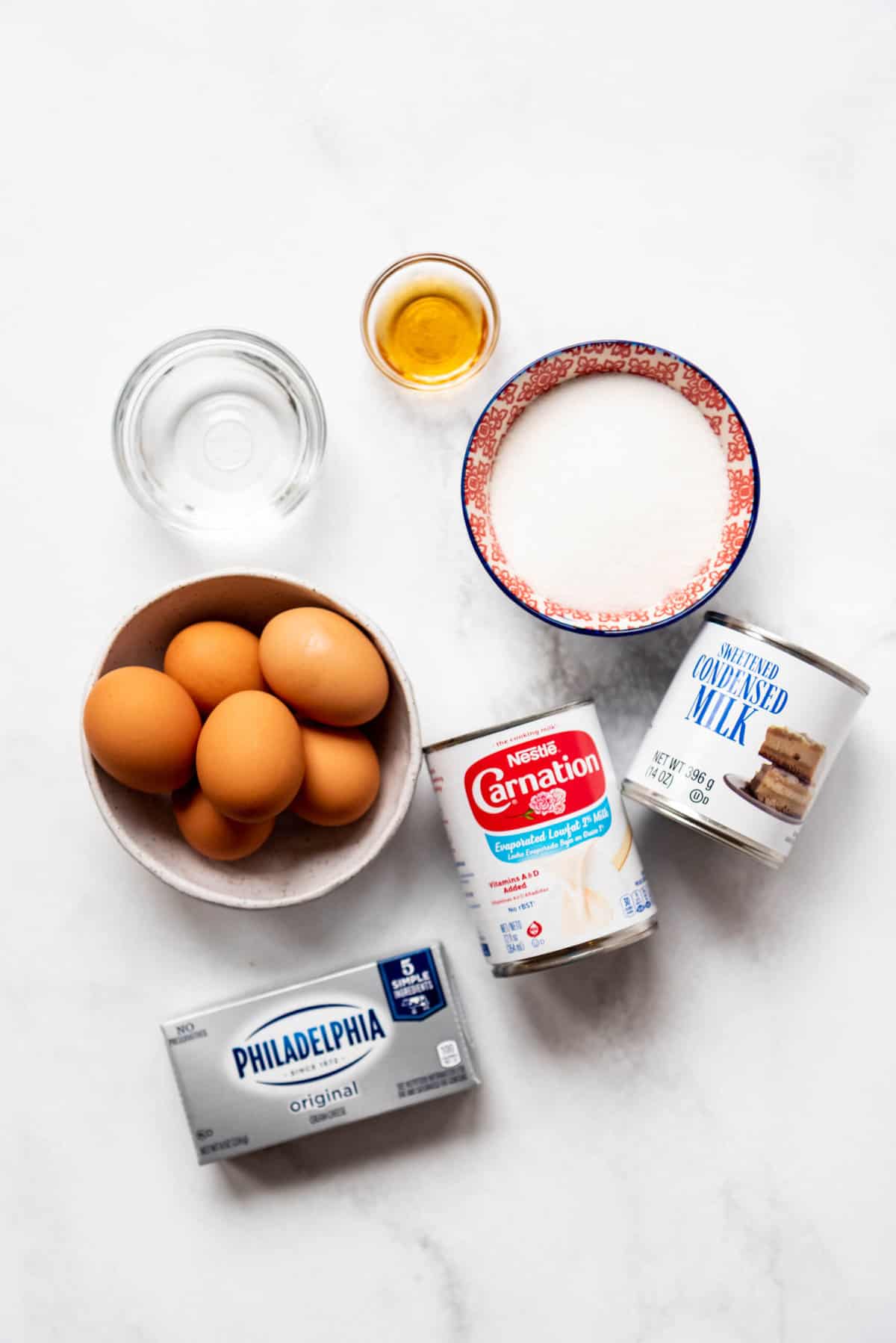
How to Make Mexican Flan
- Make caramel. Heat ½ cup of granulated sugar and water in a saucepan or skillet while stirring until the sugar melts and turns a light amber color.
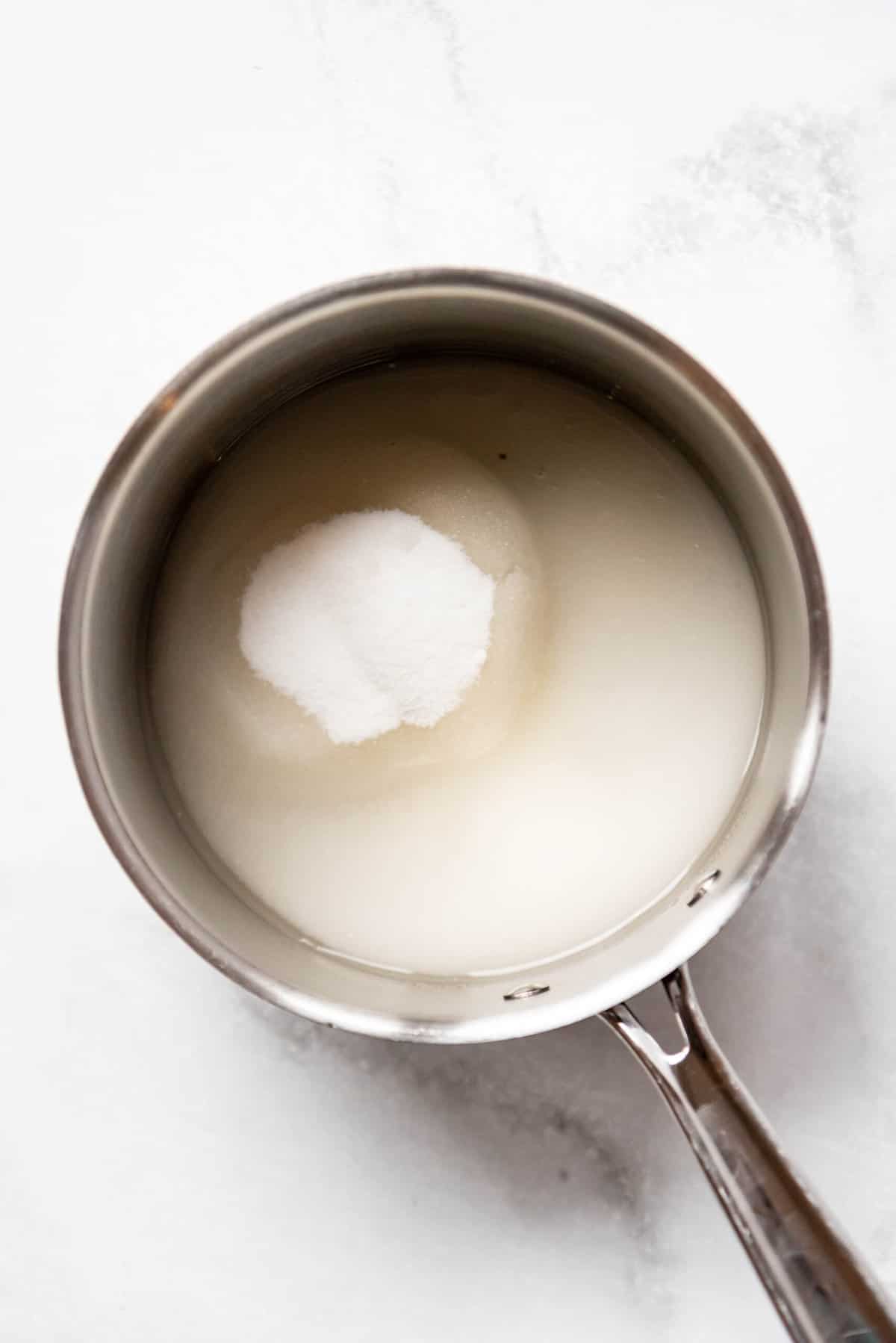
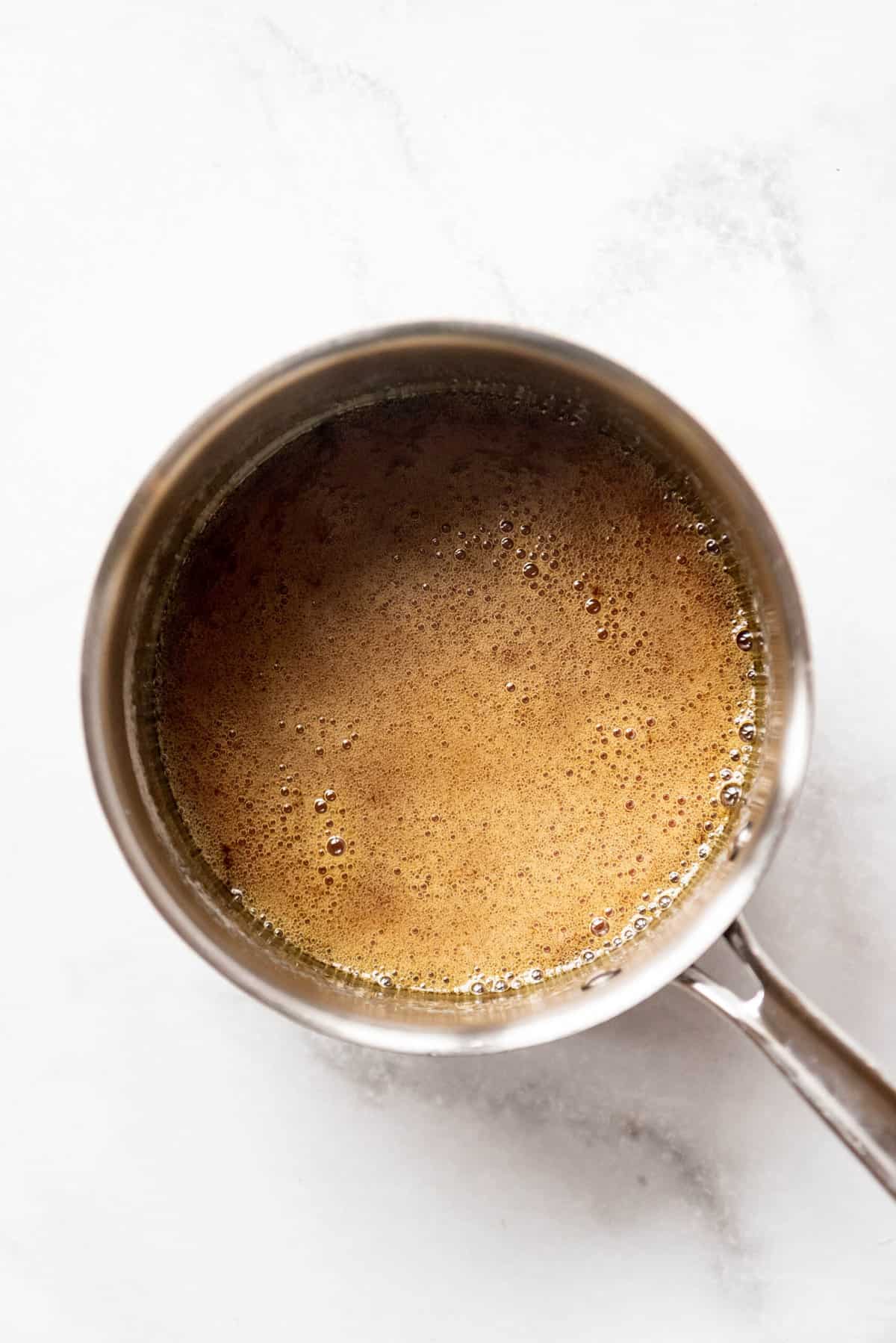
- Pour caramel into pan. Immediately pour the hot, melted sugar syrup into the bottom of the pan, swirling the pan to evenly coat the bottom, then let the caramel cool. You’ll want to be wearing an oven mitt to protect your hand when you do this.
- Make custard. Add eggs, milk (or half-and-half), remaining ½ cup sugar, vanilla extract, and orange zest to a blender. Blend until smooth.
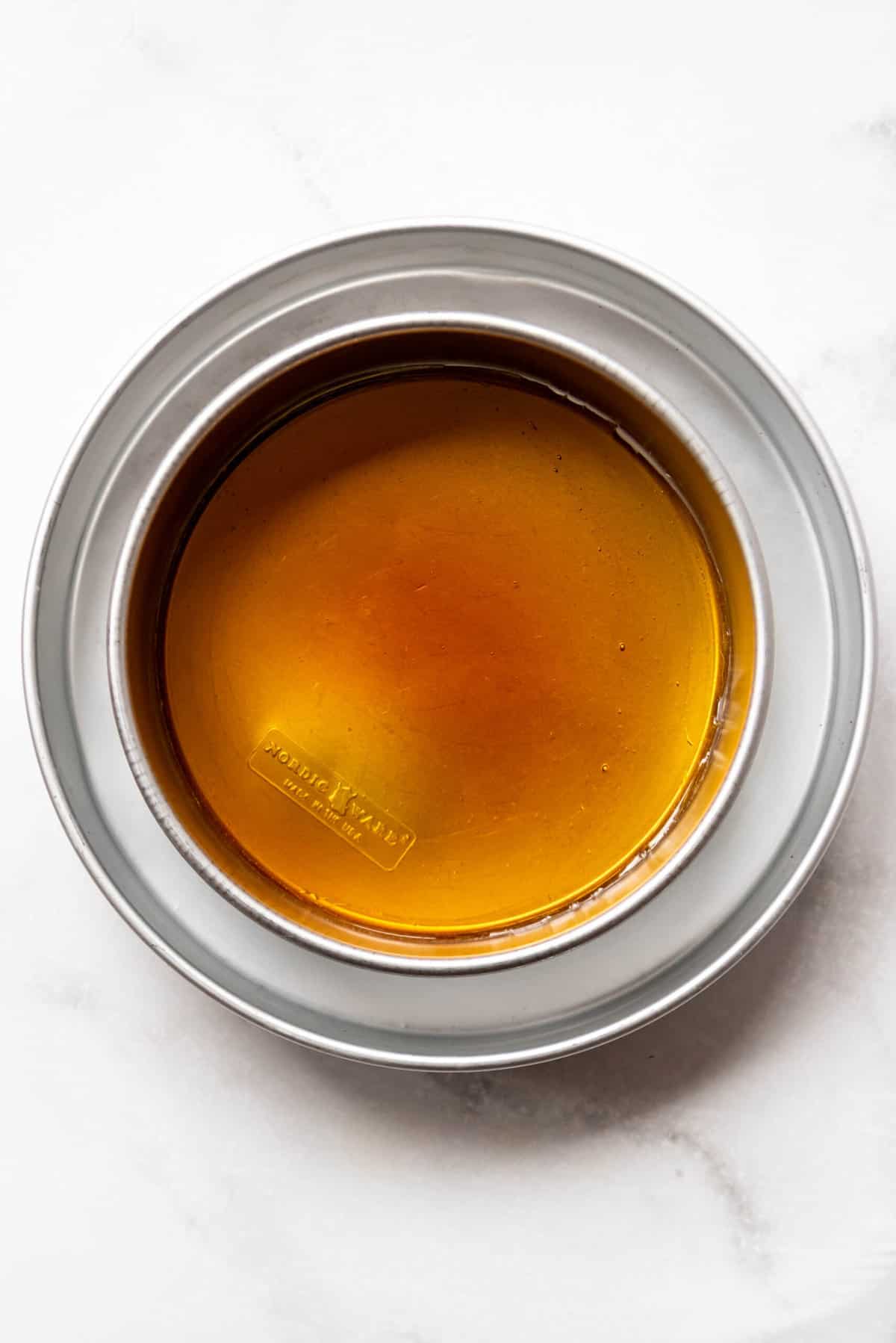

- Make a water bath. Prepare a water bath by placing a large roasting pan (it needs to be larger than your pie pan) on the middle rack of your oven.
- Assemble flan. Place the flan pan with the caramel in the center of the larger baking pan. Pour the custard mixture into the caramel-coated pan and cover it with foil. Carefully pour very hot tap water or boiling water into the roasting pan around the pie pan until it is approximately ¾” to 1″ deep.
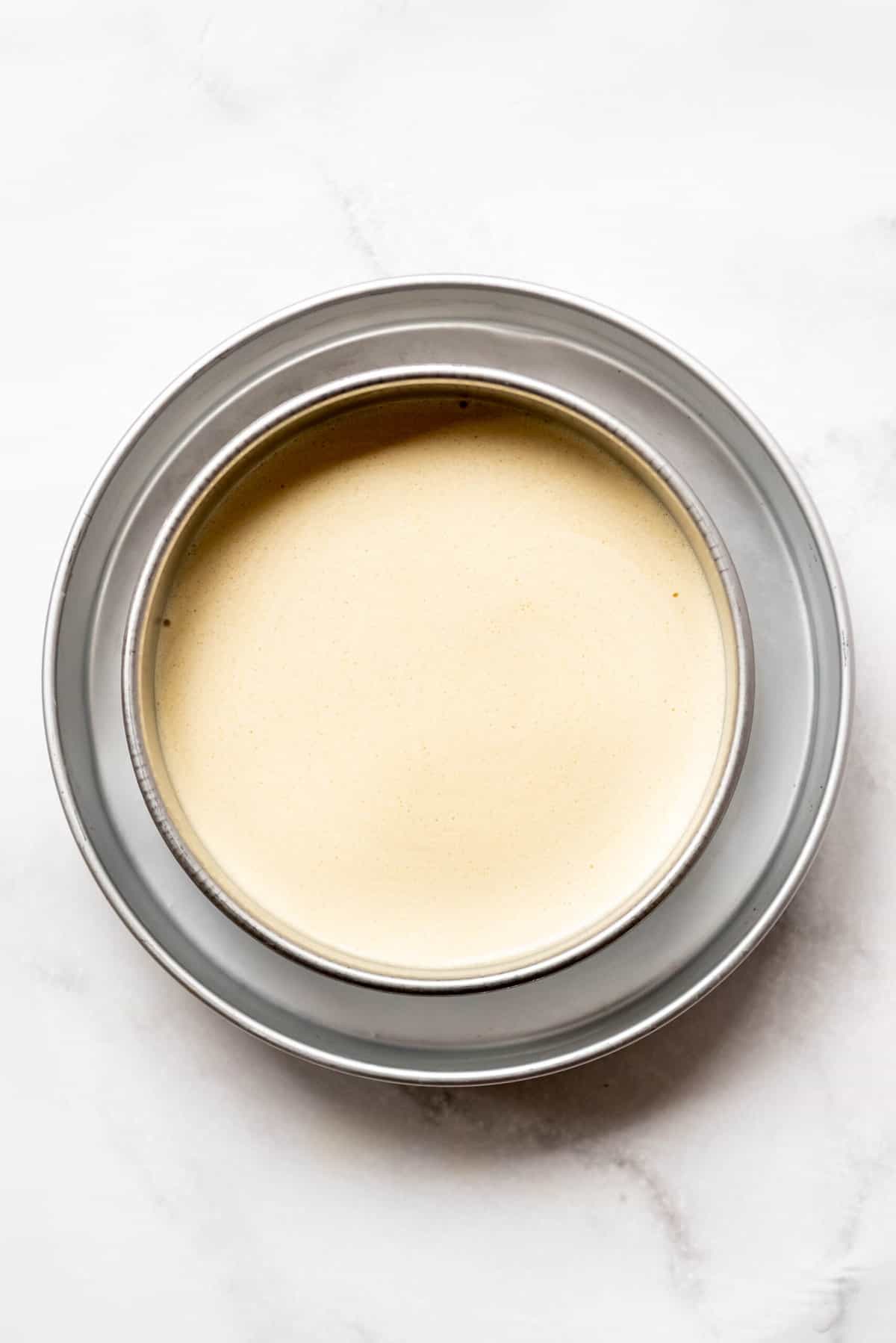
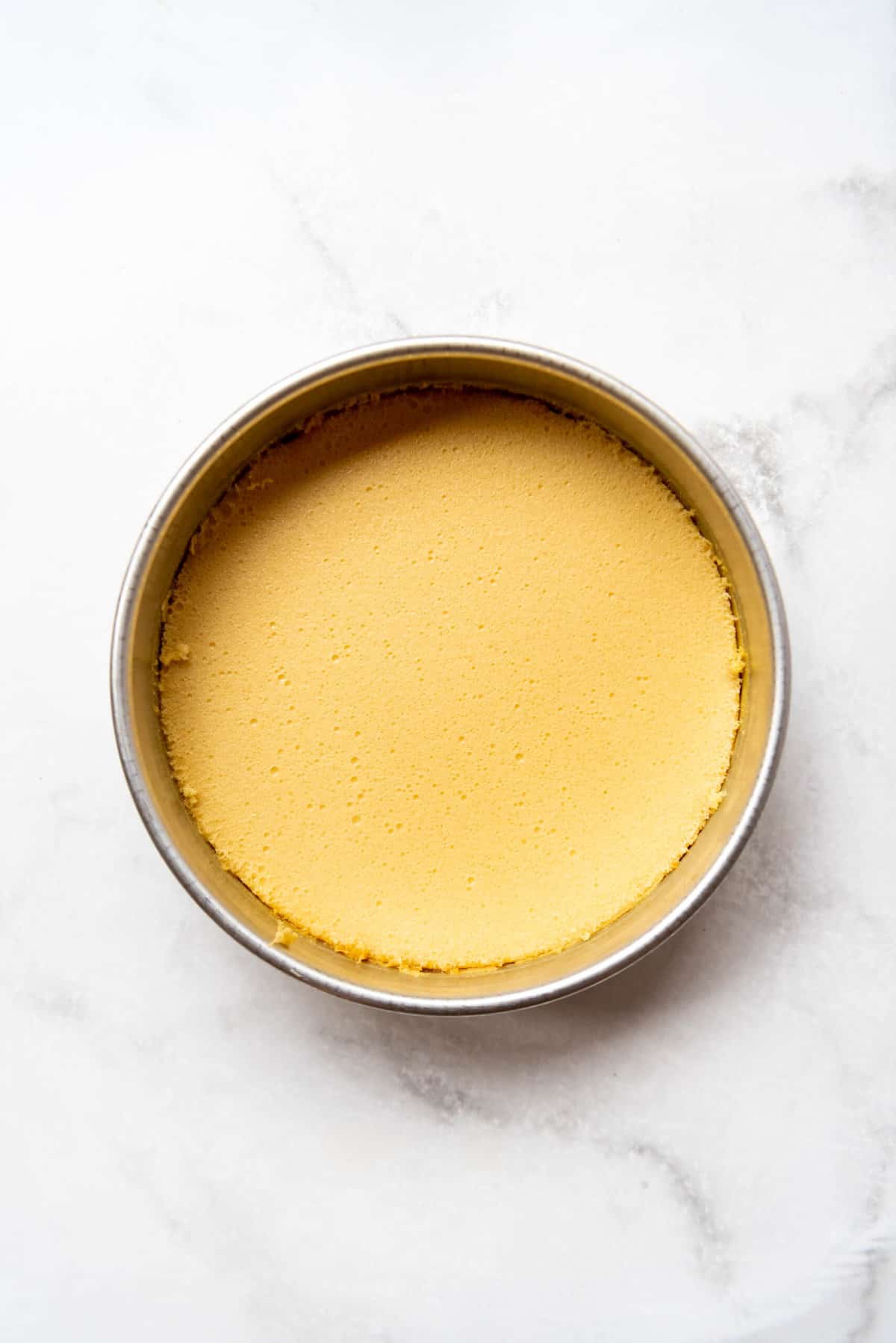
- Bake. Bake flans in Bake for 50-60 minutes in your preheated oven until set or until a sharp knife inserted in the center of the flan comes out clean. Cool on a wire rack for 1 hour, then chill in the fridge for 3½ hours until completely set.
- Unmold and serve. Run a thin knife or spatula around the edge of the flan before unmolding. Place a rimmed serving plate that is larger than the pie plate (affiliate link) over the flan, then flip them over and wait for 1 minute so the flan can release from the pan. Spoon any remaining caramel from the pan over the flan.

Recipe FAQ’s
Mexican Flan needs to be refrigerated for at least 3½ hours to let it set, but you could let it set for up to 4 days before you flip it and serve it, so it’s a great recipe to make ahead of time!
I can’t say that this an authentic Mexican flan recipe, although it does use whole eggs and vanilla extract, which typically distinguish it from Spanish flan which tends to use only the egg yolks and no vanilla. But adding cream cheese is definitely a popular variation in more than one Spanish-speaking country where it is known as “flan de queso” and it’s my favorite type of flan.
From what I can tell, most flan recipes derive from Spanish flan, which is why it’s popular in so many Latin American countries and they all use almost the same ingredients, with slight variations such as using regular milk (common in Mexican flan recipes) or canned evaporated milk and sweetened condensed milk.
Using canned milks was possibly more common in Cuban flan or Puerto Rican flan recipes likely because of lack of availability of fresh cow’s milk, but even now you’ll see dozens of Mexican flan recipes that call for canned milk ingredients so it can be hard to distinguish what truly makes one flan different from another.
Regardless, I would definitely include this flan de queso in our Cinco de Mayo menu as a Mexican dessert option along with Tres Leches Cake or Homemade Churros.
Storage & Freezing Instructions
Flan should only be kept at room temperature for a maximum of 2 hours. Store it in the refrigerator in an airtight container or covered with plastic wrap for up to 3 days.
You can freeze flan for up to 2 months to keep it fresh for later! Simply defrost it overnight in the refrigerator before serving.
Tips for Success
- Baking pan. If you use a round baking pan with a removable bottom, you’ll want to wrap the bottom and the sides of the pan with aluminum foil to keep water from getting into the flan mixture from the water bath.
- To Serve. Serve your homemade flan with a dollop of whipped cream, or with fresh berries on the side.
Individual Flan
You can make this flan in a large flan mold to serve in slices or make individual portions in ramekins or mason jars. The overall process is the same, just be sure to evenly divide the mixtures between the ramekins. It can be easier to flip smaller pie pans or ramekins over than a large one! You could even serve them in the ramekins without flipping them onto a plate if you like.
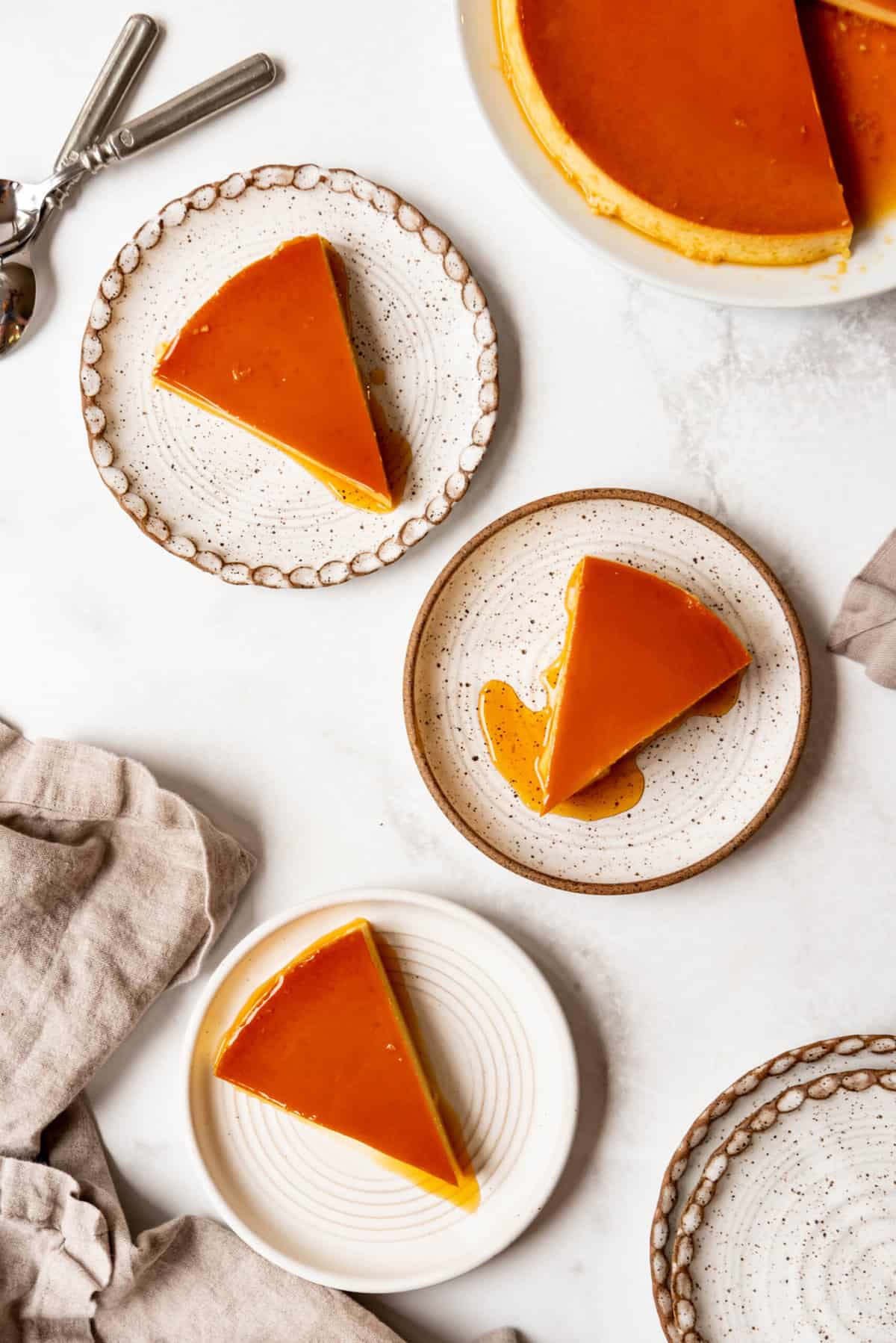
Substitutions and Variations
- Make different flavors. Add 1 teaspoon of grated orange zest to the mix to make an Orange flan. You could also use coconut, coffee, or chocolate to make some other popular flavors of flan. You can also use a different flavored extract other than Vanilla Extract. Try Almond Extract, Maple Extract, or Cherry Extract!
- Whole Milk: You can replace the sweetened condensed milk and evaporated milk with 2¾ cups whole milk or half-and-half + an additional ½ cup sugar.
- Coconut Milk: You can also replace the evaporated milk with coconut milk.
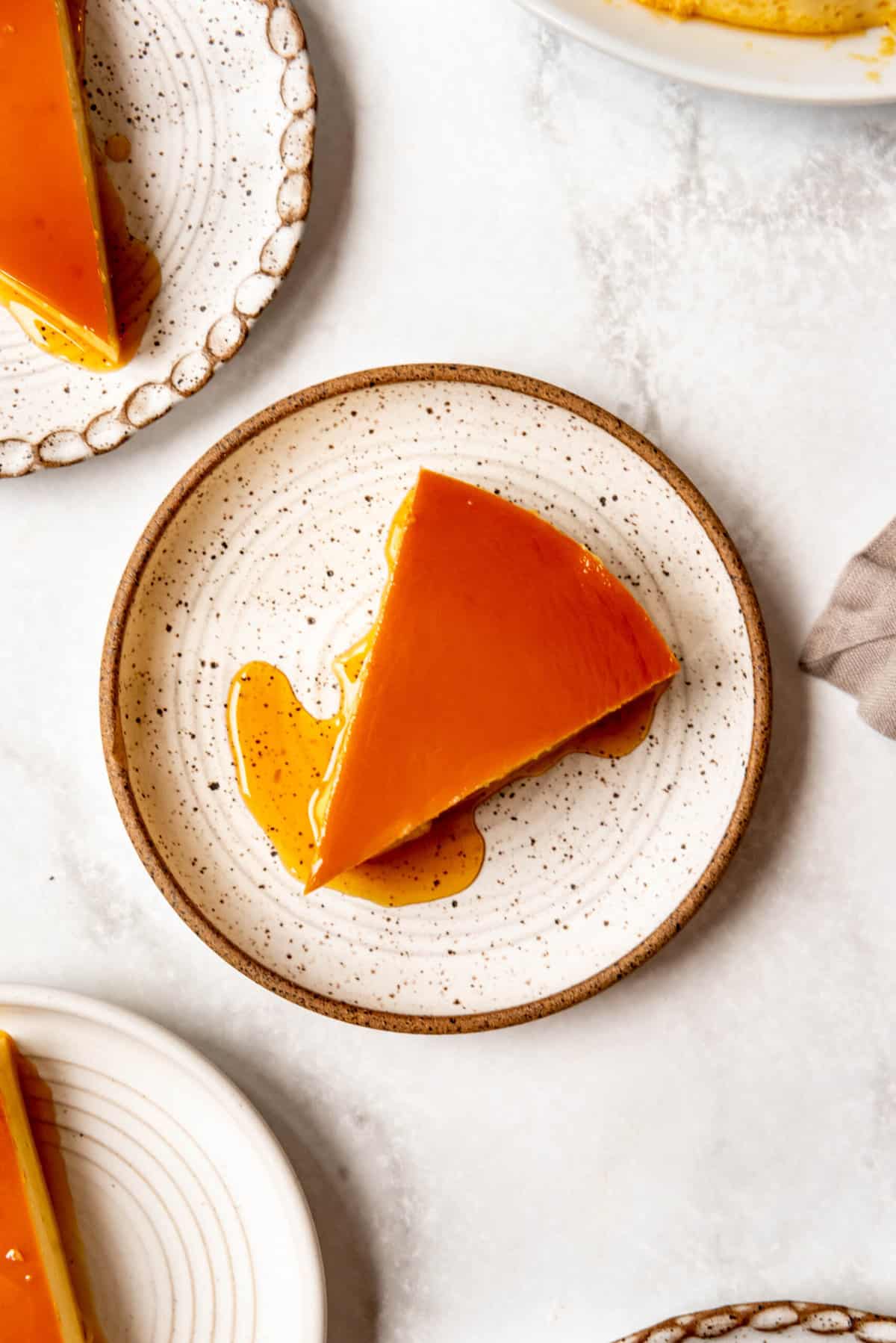
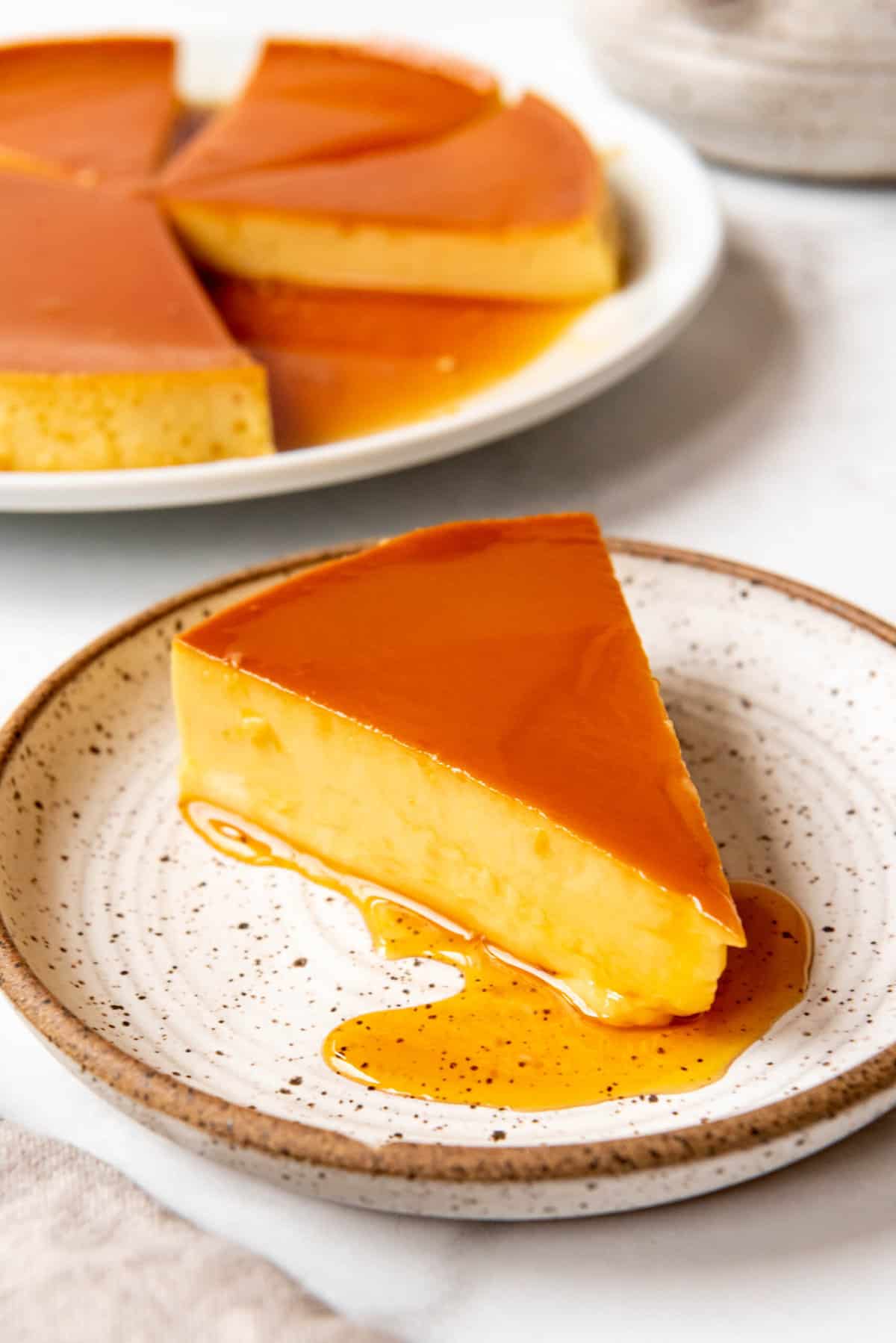
More Delicious Dessert Recipes
- Indiana Sugar Cream Pie
- Salted Caramel Pumpkin Panna Cotta
- Salted Caramel Cheesecake Bars
- No-Bake Peanut Butter Pie
- No-Bake Chocolate Eclair Cake
Did you make this recipe?
Let me know what you thought with a comment and rating below. You can also take a picture and tag me on Instagram @houseofnasheats or share it on the Pinterest pin so I can see.
Mexican Flan de Queso Recipe
Ingredients
- 1 cup granulated sugar divided
- ¼ cup water
- 1 (8-ounce) package cream cheese softened
- 6 large eggs
- 1 12-ounce can of evaporated milk (1½ cups)
- 1 14-ounce can of sweetened condensed milk (1¼ cups)
- 2 teaspoons vanilla extract

Instructions
- Preheat oven to 325°F.
- Heat ½ cup of granulated sugar and water in a saucepan or skillet while stirring until melted and a light amber color.1 cup granulated sugar, ¼ cup water
- Immediately pour the hot melted sugar syrup into a 9-inch pie pan or tart pan, swirling the pan to evenly coat the bottom. Let the caramel cool.
- Beat cream cheese in a large bowl with a hand mixer until creamy and smooth. Add eggs, milk (or half-and-half), remaining ½ cup sugar, vanilla extract, and orange zest. Beat well until smooth.1 (8-ounce) package cream cheese, 6 large eggs, 1 12-ounce can of evaporated milk, 2 teaspoons vanilla extract, 1 14-ounce can of sweetened condensed milk
- Prepare a water bath by placing a large roasting pan or another pan larger than your 9-inch pie plate (affiliate link) on the middle rack of your oven. Place the pie pan with caramel in the center of the roasting pan. Pour the egg mixture into the caramel-coated pan and cover it with foil. Carefully pour very hot tap water or boiling water into the roasting pan around the pie pan until it is approximately ¾” to 1″ deep.
- Bake for 50-60 minutes until set or until a sharp knife inserted in the center of the flan comes out clean. Cool on a wire rack for 1 hour, then chill in the fridge for 3½ hours until completely set.
- Run a thin knife or spatula around the edge of the flan before unmolding. Place a rimmed serving plate that is larger than the pie plate (affiliate link) over the flan, then flip them over and wait for 1 minute so the flan can release from the pan. Spoon any remaining caramel from the pan over the flan.
- Slice and enjoy!
Notes
- Storage: Flan should only be kept at room temperature for a maximum of 2 hours. Store it in the refrigerator for up to 3 days.
- Freezing: You can freeze flan for up to 2 months to keep it fresh for later! Simply defrost it overnight in the refrigerator before serving.

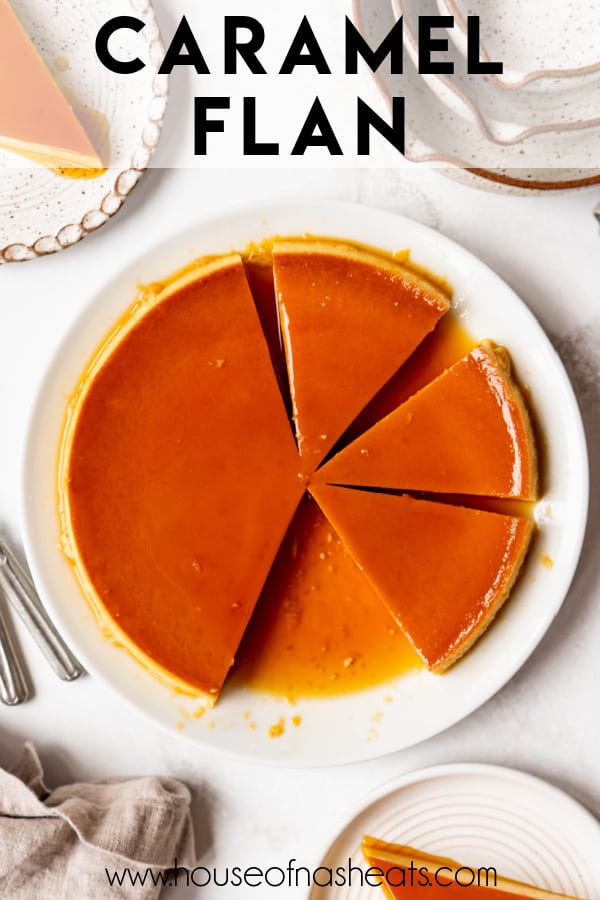

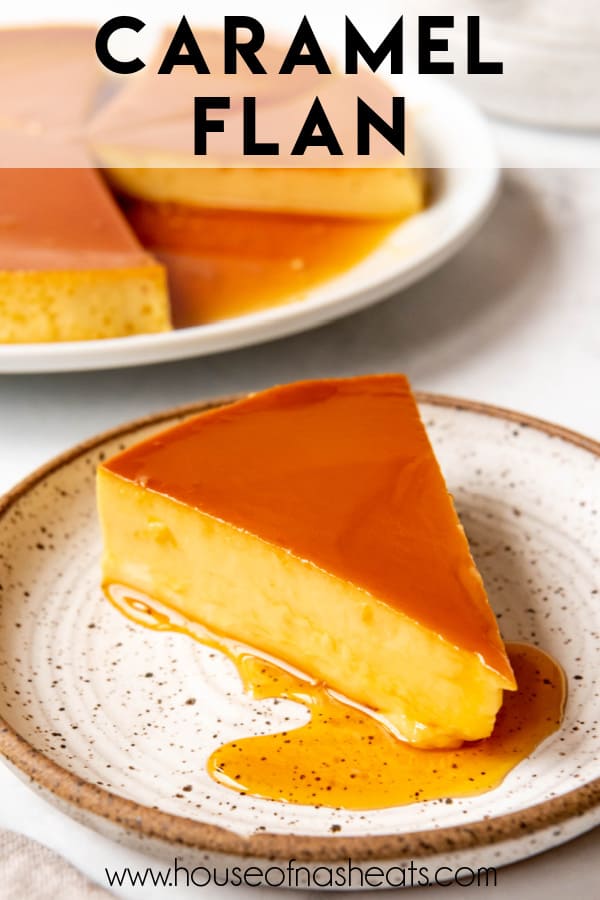
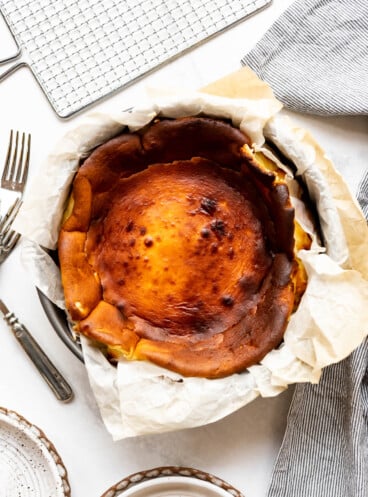
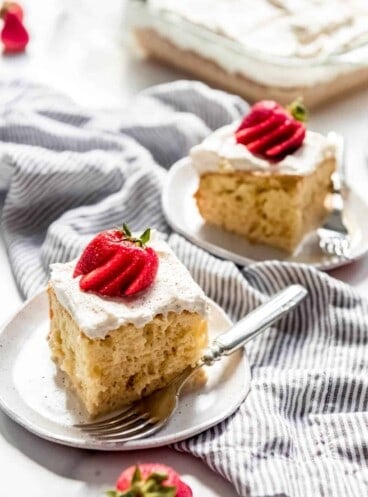
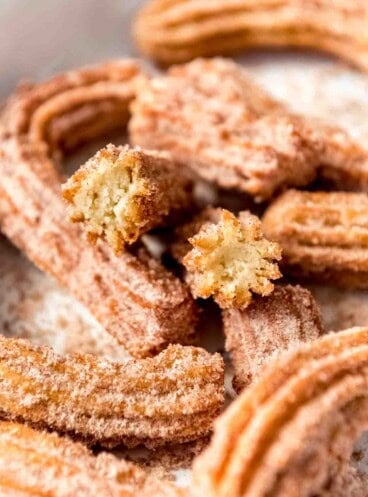




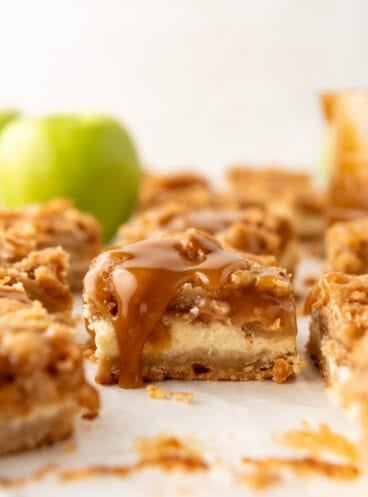

When was milk not readily available in Puerto Rico?
See records as far back as the 1700’s
Even landless peasant sold vegetables and milk to subsist. I don’t think they used canned milk products.
154. Milk production on farms, decennial 1889-1919, annual
1924-1945. SOURCE: Bureau of Agricultural Economics and Bureau of the Census. For 1924-1945, see Bureau of Agricultural
Economics, Farm Production, Disposition, and Income from Milk,
by States, 1946-47 (mimeographed).
Beginning in 1924, the series
represent estimates of calendar-year totals prepared by the Bureau
of Agricultural Economics. The estimates are based on interpretations of periodic census enumerations, analysis of annual and
monthly survey data on milk cows and milk production, and checks
against information regarding milk utilization obtained from dairy
plants and other sources. For 1919 and earlier years, the data are
those’ of the Census Bureau based on its decennial agricultural
census, and converted from gallons to pounds by use of a conversion factor of 8.6 pounds per gallon. For 1889, the census totals
are the reported figures. For 1899 they include estimates for incomplete reports and for 1909 and 1919 include estimates of production on farms that reported milk cows, but failed to report milk
produced. The 1889 and 1899 data were enumerated as of June the
following year, the 1909 data as of April 15, 1910, and the 1919
data as of January 1, 1920.
E 155. Whole milk sold from farms, decennial 1869-1919, annual 1924-1945. SOURCE: See source cited for series E 154, above.
Beginning in 1924, the figures are estimates prepared by the Bureau of Agricultural Economics. These’ are based on analysis of
periodic Census enumerations and on survey data obtained from
farmers on milk disposition and on dairy-plant records of milk received and production of manufactured dairy products made primarily from milk, together with indicated levels of fluid milk
consumption. The data shown include both milk sold to plants and
dealers and milk retailed by farmers directly to consumers. The
data for 1919 and earlier years are from the Cepsus of Agriculture
conducted by the Bureau of the Census.
E 156-162. Production of dairy products, 1849-1945. SOURCE:
For 1849-1929, see E. E. Vial, cited below; for 1930-1945, see Bureau of Agricultural Economics, Production of Manufactured Dairy
Products, 1945, March 1947. For 1930-1945, data are totals obtained by the Bureau of Agricultural Economics in its annual enumeration of output of dairy manufacturing plants. For the years
before 1930, the level of the figures is based mainly on the Census
Bureau’s enumeration of the output of dairy plants with intervening years having been interpolated for some products. The interpolation methods are fully discussed in Vial, E. E., Production and
Consumption of Manufactured Dairy Products, Department of Agriculture Technical Bulletin 722, April 1940. For additional information see text for individual series below.
REASSESSING CONSENSUS:
ALEJANDRO O’REILLY’S 1765 VISITA AND PUERTO RICAN HISTORY
by
Sean Thomas Malle
Many among the growing population, moreover, were desacomodados, or
landless peasants and squatters. O’Reilly explicitly and disdainfully recognized this class
of people in his memoria as deserters who lived off the land in small huts growing
plantains and milk for subsistence and illicit trade
It may be delicious, but this is in no way authentic. Not even maybe. I am half Mexican and have spent significant time there. I’ve never seen cream cheese, sweetend condensed milk or evaporated milk used in Flan, nor have I ever done so myself.
Flan isn’t Mexican.